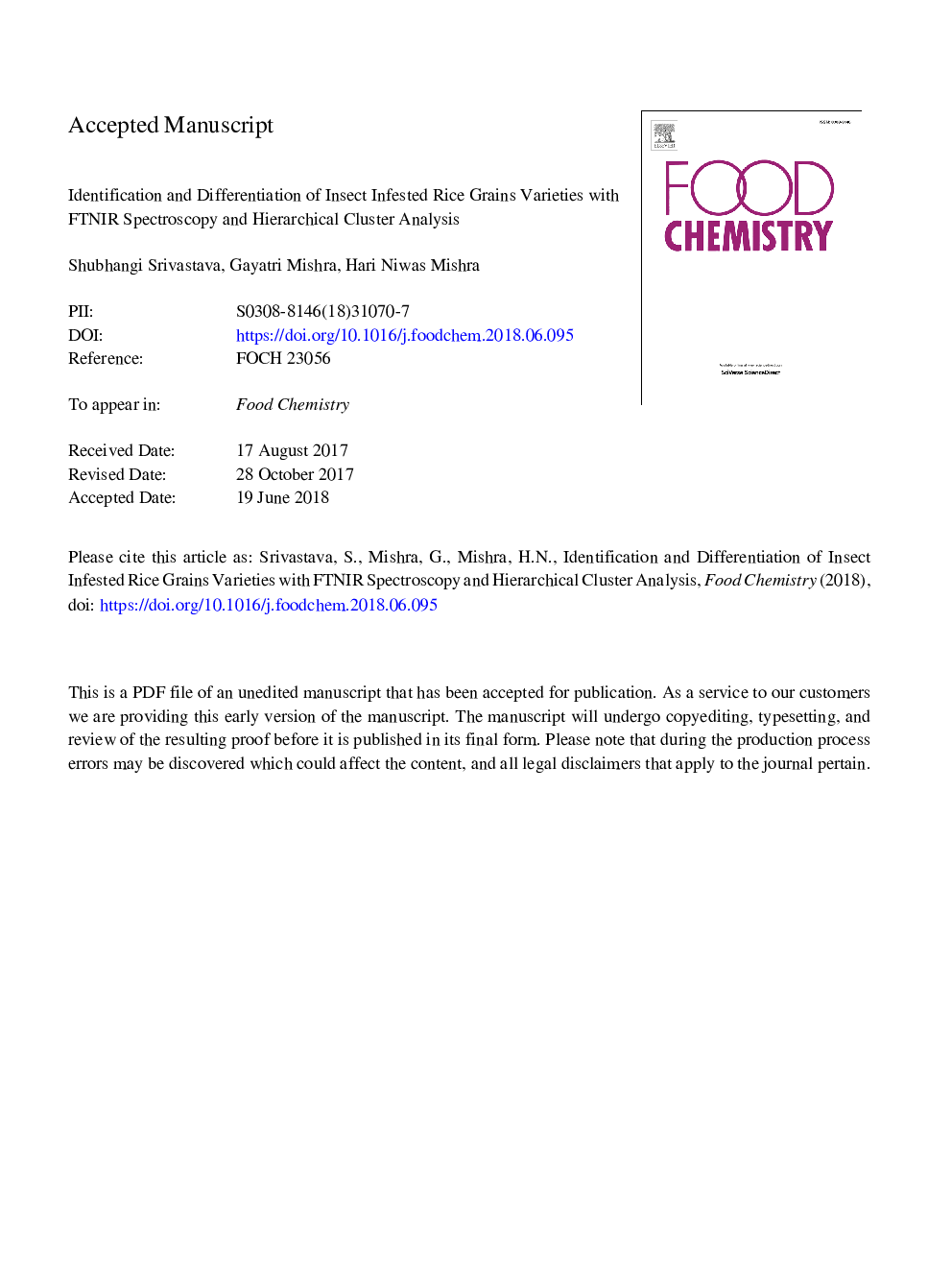| Article ID | Journal | Published Year | Pages | File Type |
|---|---|---|---|---|
| 7584406 | Food Chemistry | 2018 | 29 Pages |
Abstract
The potential and practicality of FTNIR as a screening tool, with ward's algorithms, was performed for two different varieties of rice namely, 'badshah bhog' and 'swarna', followed by cluster, dendrogram, histogram, and conformity analysis with different storage periods (0-225) and insect infestation. Dendrogram analysis resulted in a clear differentiation between infested rice varieties with non-infested ones while hierarchical cluster analysis, lead to detection of different levels of infestations. Histograms analysis of averaged FTINR spectra of rice grains samples provided 100% classification between infested and non-infested samples. Dissimilarities between rice grains were calculated using Pearson's correlation coefficients which were further converted to D values, and heterogeneity among the different varieties of rice along with a different level of infestation was identified. The results further revealed that the percentage accuracy (%) of classification for badshah bhog varied from 93.10 to 98.84%, while that for the swarna rice was between 95.75 and 99.74%.
Related Topics
Physical Sciences and Engineering
Chemistry
Analytical Chemistry
Authors
Shubhangi Srivastava, Gayatri Mishra, Hari Niwas Mishra,
